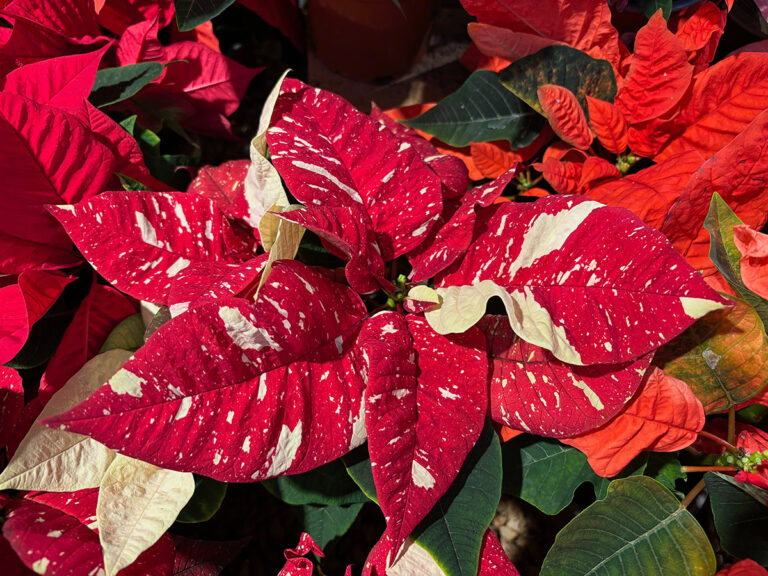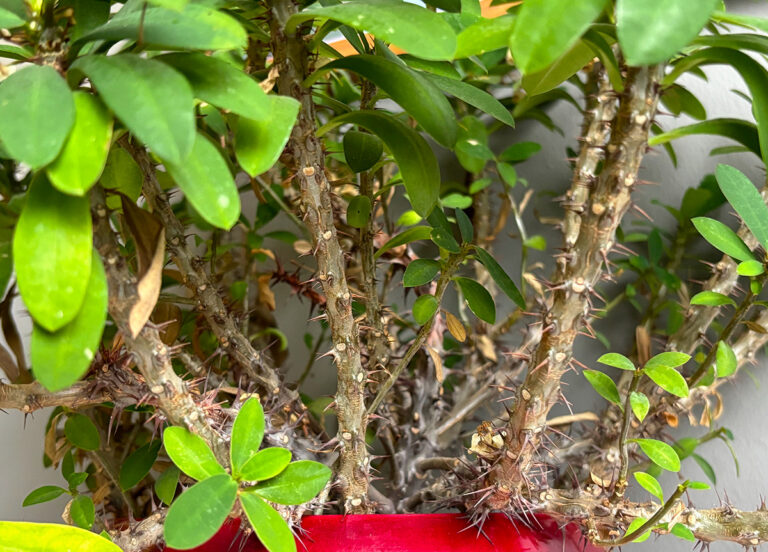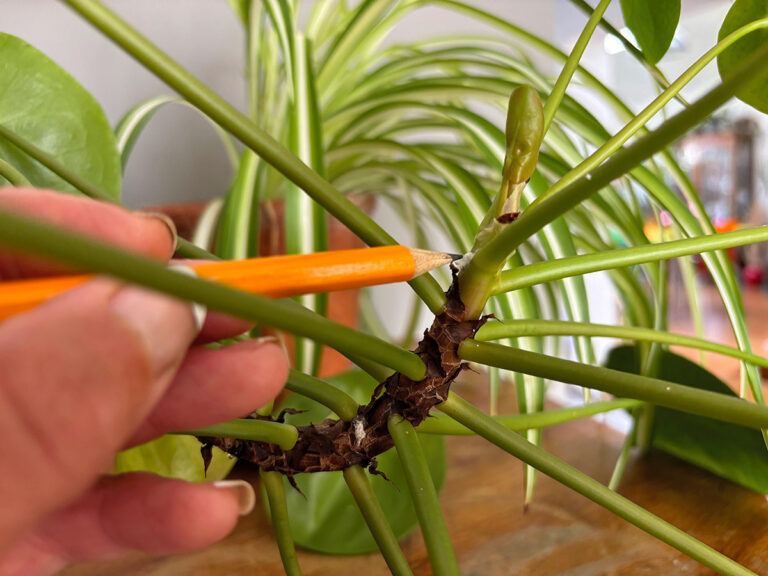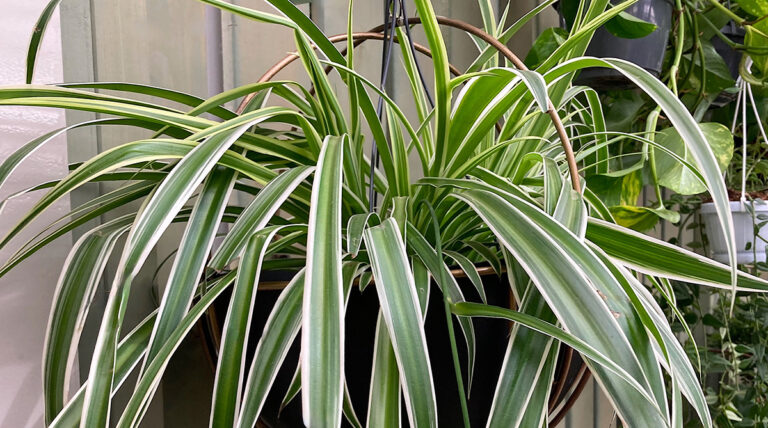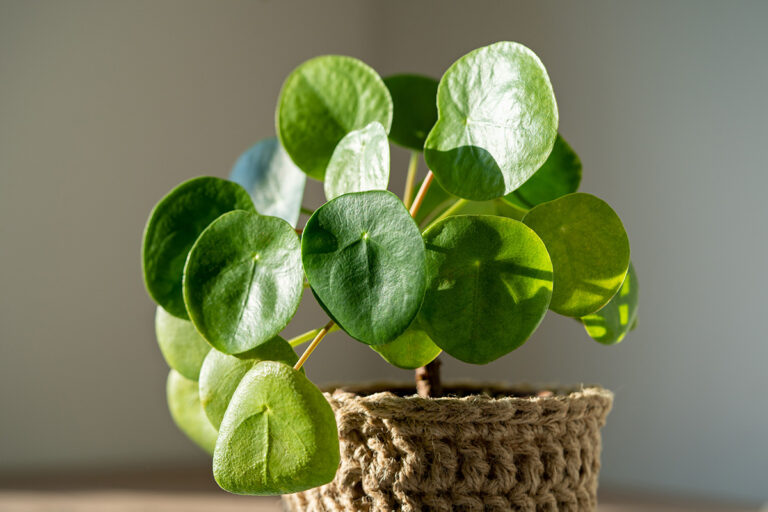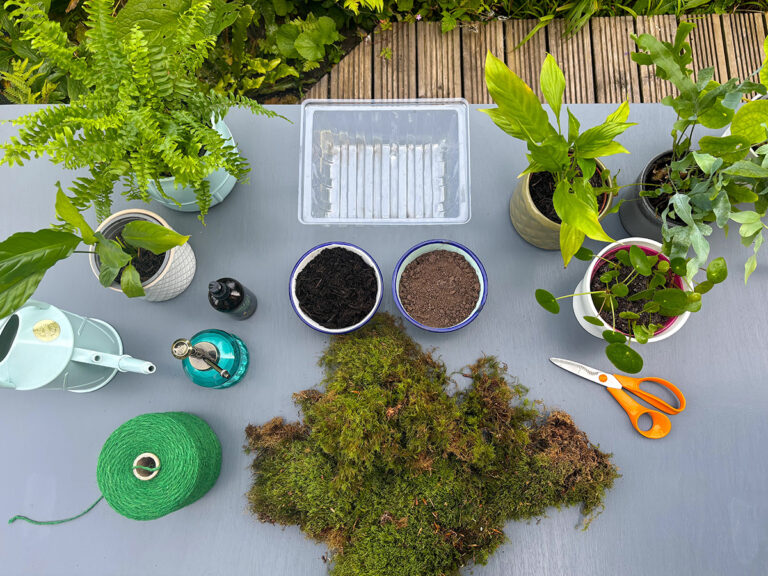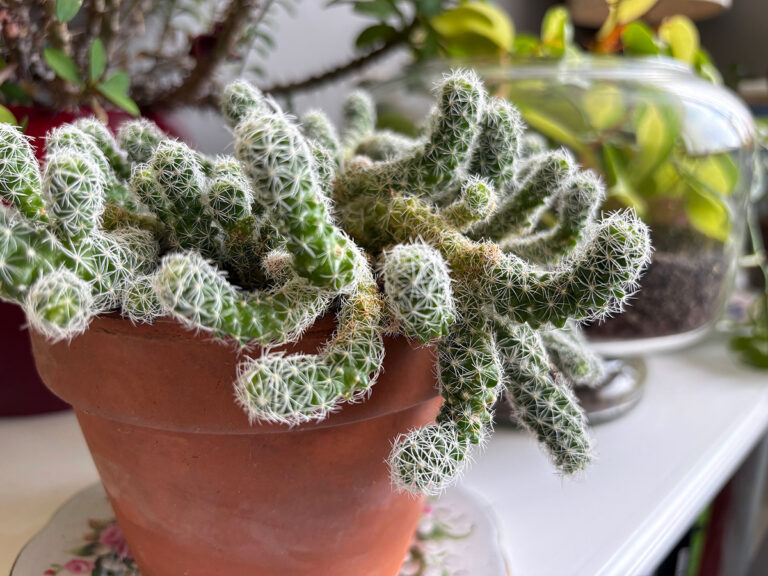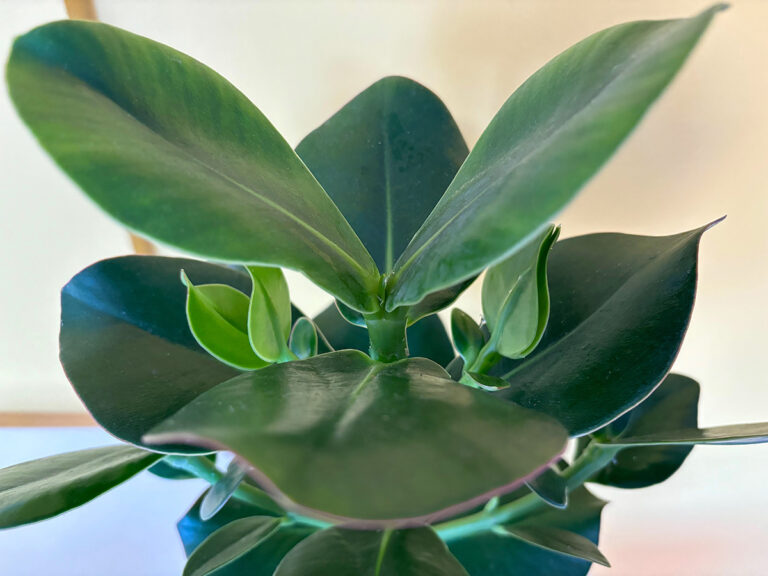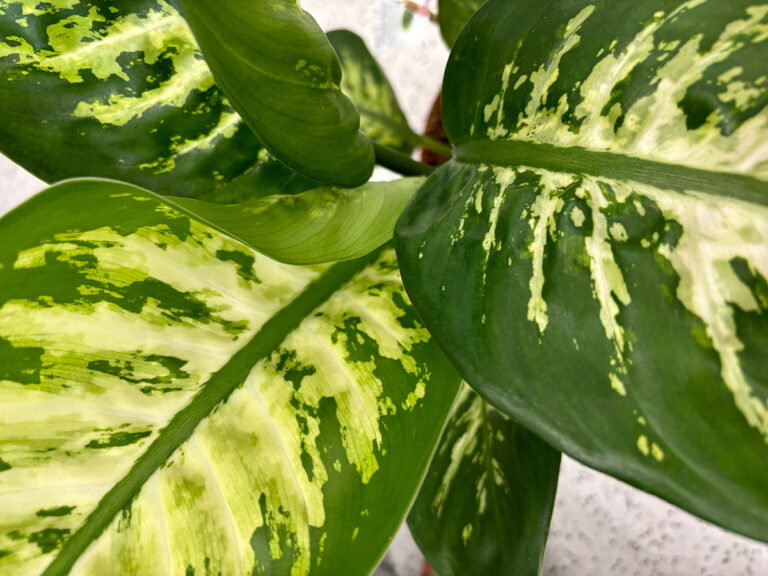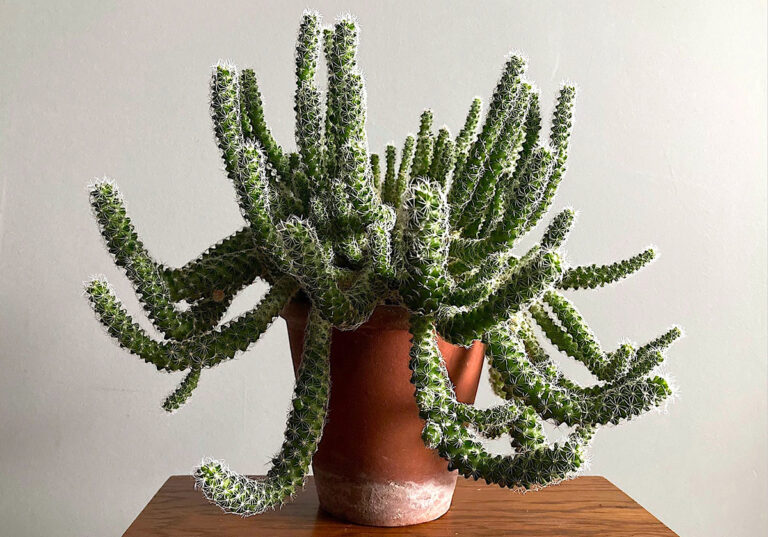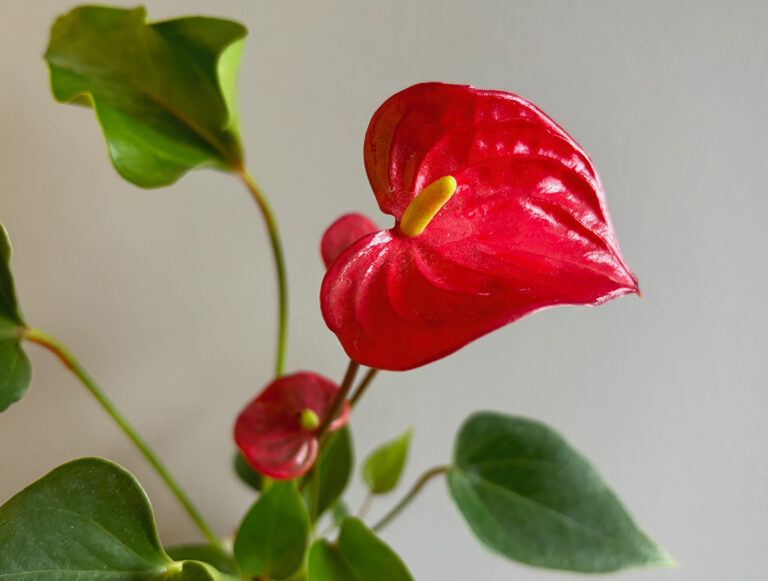Chamaedorea elegans, Parlour Palm and Dypsis lutescens (prior to 1995 originally called Chrysalidocarpus lutescensm), Areca Palm also know as butterfly palm or bamboo palm are popular houseplants and often hard to tell apart but subtle differences may sway your plant choice. Parlour palm leaves are compact with upright growing fronds whereas areca palms are taller with larger, arching leaves.
In Victorian homes, parlours were the most opulent rooms in the house where hosts could show off their status when receiving guests. Parlour palms had glamour, they looked exotic and flamboyant, and signified wealth but as time has passed these palms have shed this reputation and these days most of us are simply looking for a striking plant which is easy to look after.
Slow growing parlour palms are native to the rainforests of Guatemala and Mexico. These compact foliage plants have a hidden super power – they can help purify air and filter impurities from our homes. Arching Areca palms share these attributes whilst originating along the riverbanks and forests of eastern Madagascar where it is sadly endangered due to a loss of habitat. Both palms proudly hold the RHS Award of Garden Merit.
These multi-stemmed, evergreen palms require minimal intervention so are perfect for beginners. Check out how to make your modern home into a cross between a Victorian parlour and a rainforest!
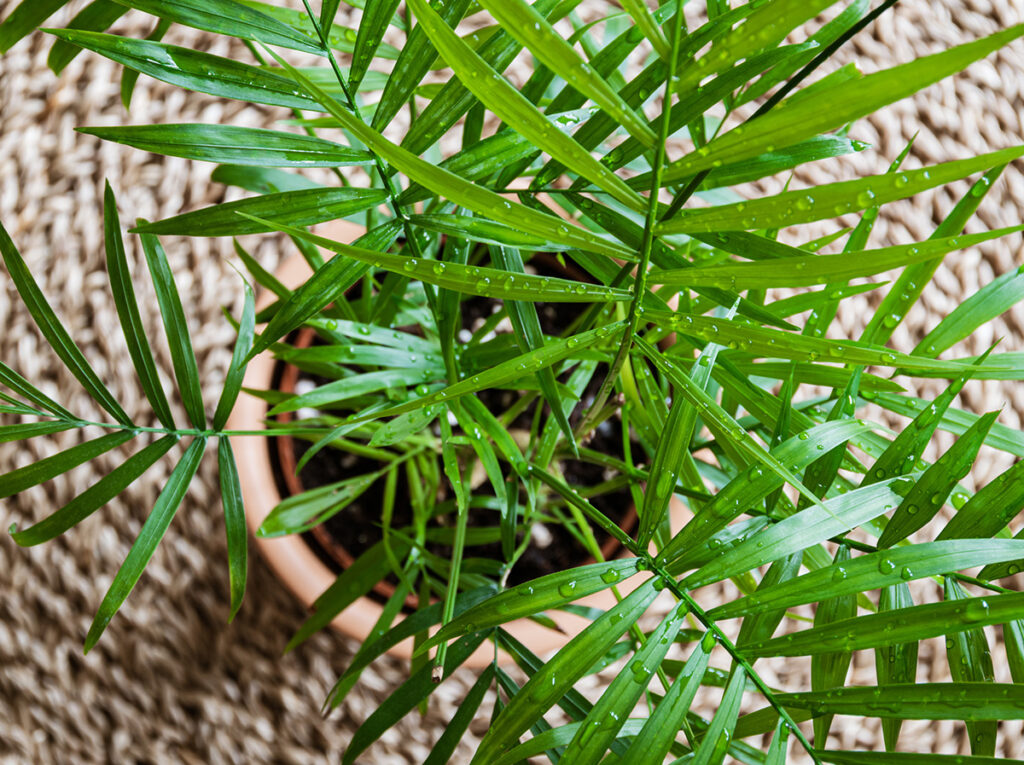
Light
Palm’s are ideal for areas in the house which do not get full sun. In their natural habitat these palms grow in rainforests and hydric forests where there is competition for light. Strong direct sunlight will scorch leaves so opt for bright but indirect light but if the only available space is a bit shady they will tolerate this spot too. You can always move it outdoors for the summer months if it needs a holiday.
Water
Keep palms moist but not waterlogged. If you have a small potted plant then once a week submerge them in a bucket of rainwater and allow them to drain before returning to their outer pot or saucer. Otherwise, water large palms once a week or when the soil surface feels dry. Do the finger test; pop your finger in the soil and water if the first few centimetres are dry. Beware, palms are sensitive to chemicals in tap water.
Temperature
Loving a rainforest environment, palms are fans of humidity so a steamy bathroom or kitchen is ideal. Keep temperatures around 18-24°C (64-75°F).
Increase humidity by grouping pots together, stand on a tray of damp pebbles and spray regularly with a fine mist of Plantsmith Perfecting Houseplant Care Mist, which will not only provide moisture but also essential nutrients, alternatively mist with rainwater. Misting temporarily increases humidity and help compensates for the dry air in our homes. Surprisingly these hardy palms will tolerate dry air conditions but for best results keep palms warm, humid and away from radiators in winter.
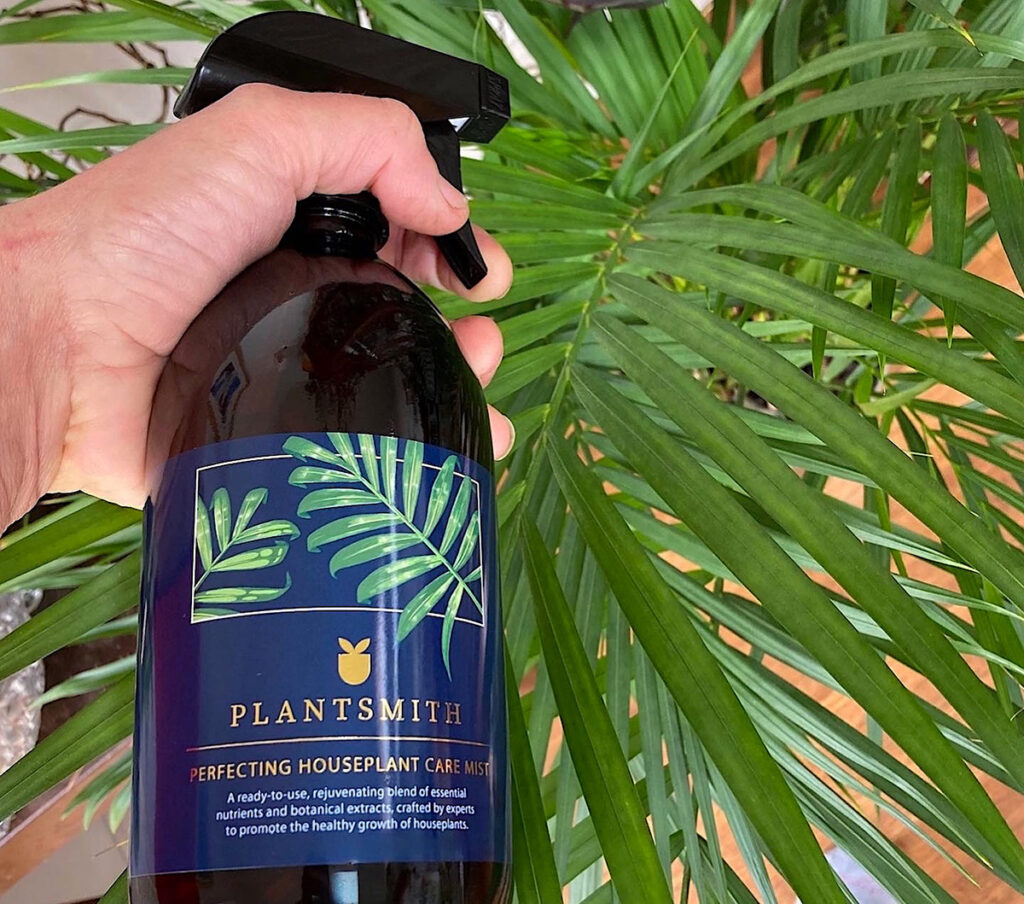
Soil
Make up a mix of peat-free compost and perlite to help drainage; you can always add a little orchid bark or sand if you want to really keep your mix airy. If you haven’t got time for that then purchase a bag of pre-made houseplant compost.
Fertiliser
Feed your palm once a month to keep foliage healthy and green. All potted plants rely entirely on us to feed and water them so ensure the formula you give is in tune with houseplant’s needs.
Houseplants require a weaker formula than many other outdoor plants, in fact over fertilising can be detrimental to houseplant health; for example, excess salts can burn the roots, but when houseplants receive the correct balance of essential nutrients and minerals they can function properly and are less likely to succumb to pests and diseases. Plants carry out all their chemical reactions in solution so applying a soluble food stops the plant wasting energy converting pelleted plant food into a useable form.
Plantsmith’s Fortifying Houseplant Feed & Tonic has been blended to provide a perfect balance of iron, magnesium, potassium, kelp and essential macro and micro nutrients to encourage strong, healthy growth. Importantly Plantsmith’s Fortifying Houseplant Feed & Tonic contains the optimum ratio of nutrients for houseplants.
Apply the formula by shaking the bottle so all nutrients are evenly mixed, then add 5 ml (approx. 4 pumps) from the 500ml bottle or dilute one pipette from a 100ml bottle into a litre of tepid rainwater and water onto soil.
Flower
When the lighting conditions are right you may see your palm flower. Lots of small yellow flowers radiate from long panicles, reminiscent, I think, of flowering mahonia. Parlour palms are either male or female and if you have female plant you’ll be in for a treat as the flowers are fragrant. Areca palms are monoecious and has both male and female flowers on the same plant.
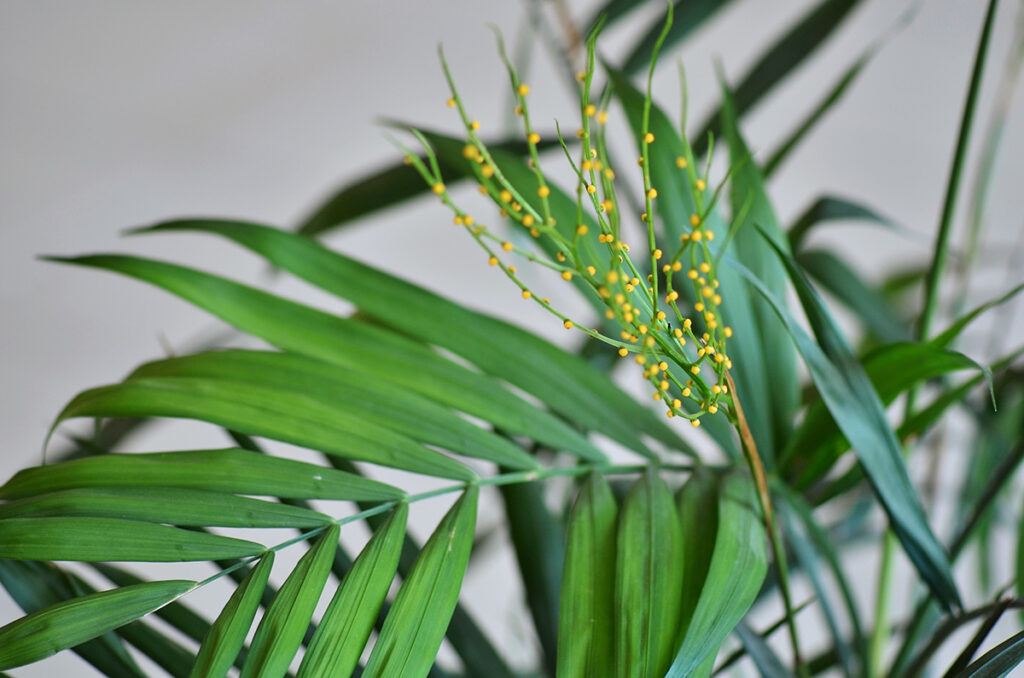
Problem solver
These palms have green pinnate compound leaves which mean smaller leaflets stem from a central midrib in rows opposite each other, like a feather. Leaves are a great indicator of plant health so here are some tips for if your leaves start changing colour.

Leaves turning yellow
Leaves will naturally turn yellow as they age but could also be a sign of too much light and under-watering so try moving your plant and increase watering.
Leaves turning brown or pale
Brown or pale leaves can be a sign that your plant is receiving too much sunlight and is being scorched. Move it to a shadier spot and this should rectify the problem. Alternatively, it could be due to overwatering so if you think this the case reduce watering and monitor plant health.
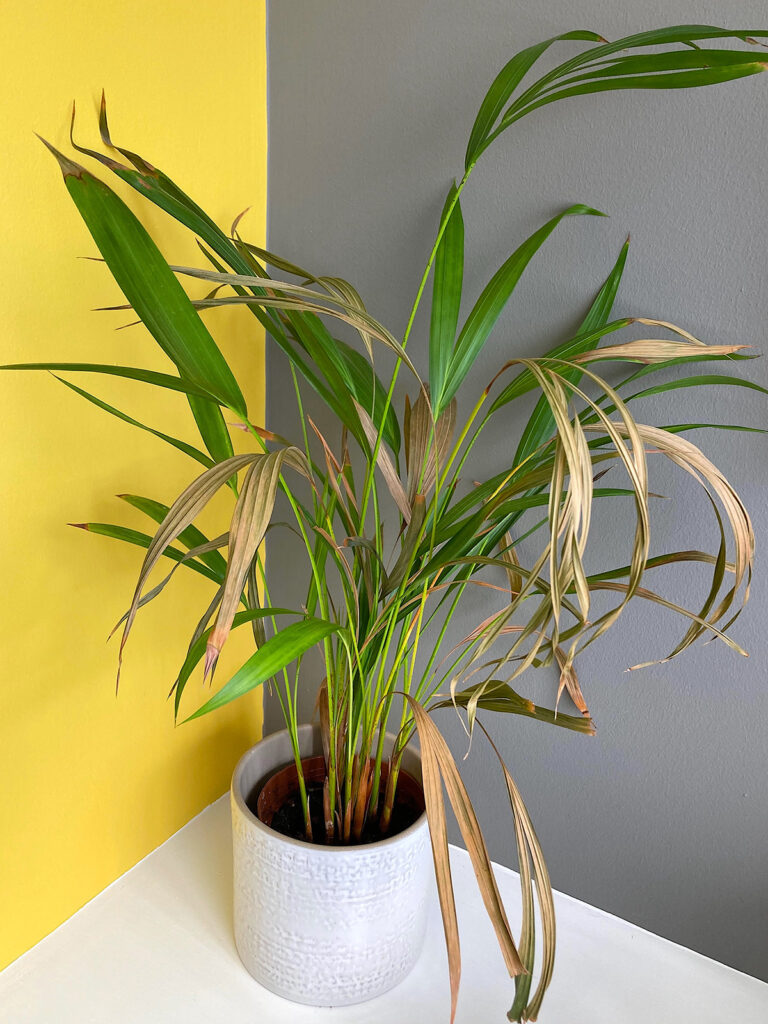
Leaves are covered in white powder
White powder covering leaves may be fungal disease powdery mildew; this can occur when plants are put in overcrowded, humid, poorly ventilated and low light conditions. Powdery mildew spreads via air borne spores so move the infected plant away from others and wash down the leaves. Carefully mist with a baking soda or milk solution. If isolated to a few leaves then simply remove these. Keep plants well fed.
Dull leaves
The palms may be getting too much light or not enough humidity so move its position and mist.
Prune out damaged or dead leaves down to the base to promote new growth and make sure plants have good ventilation and humidity.
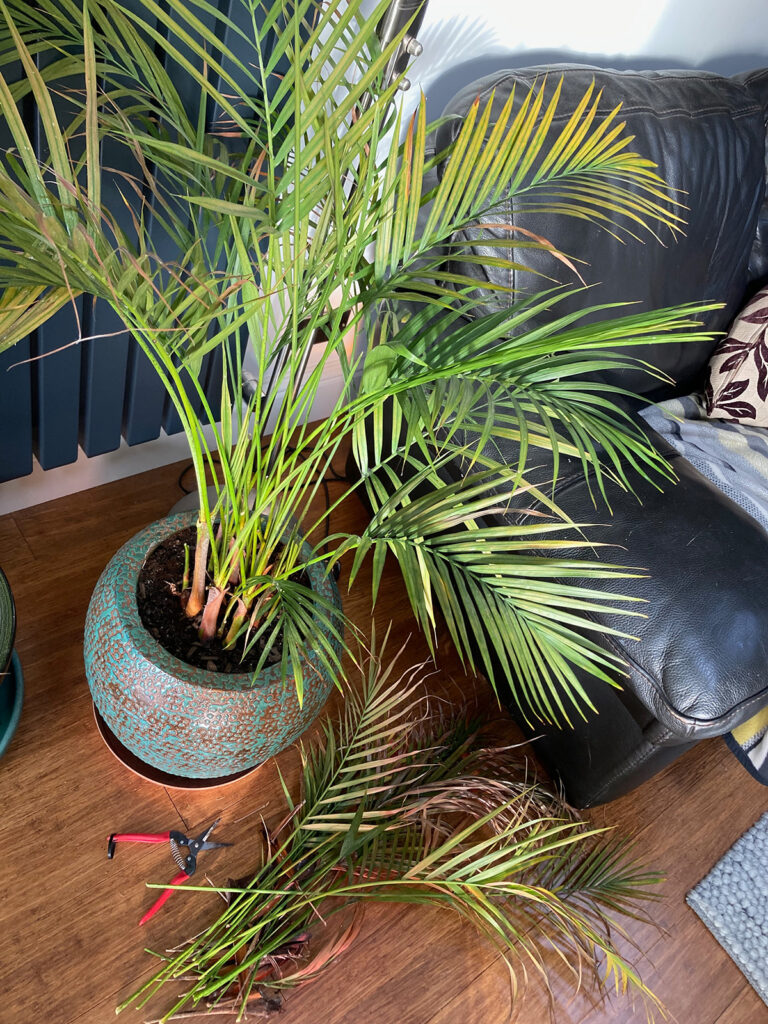
Good news, both parlour and areca palms are non-toxic for cats and dogs.
Pests
Palms are prone to unwanted visitors like mealy bugs, spider mites, and aphids.
Deter pests by using Plantsmith’s Protecting Bug Control Spray across the foliage. This is a 100% vegan, natural formula that also provides your plant with essential nutrients. This protective spray blends natural surfactants alongside magnesium, iron chelate, and manganese chelate which will help boost the plant’s vigour.

Keep an eye on your houseplants to look out for signs of pest damage. Infestations can also be removed by hand with a cloth. If some leaves have suffered then cut them out, this will put the plant’s energy into its remaining healthy leaves.
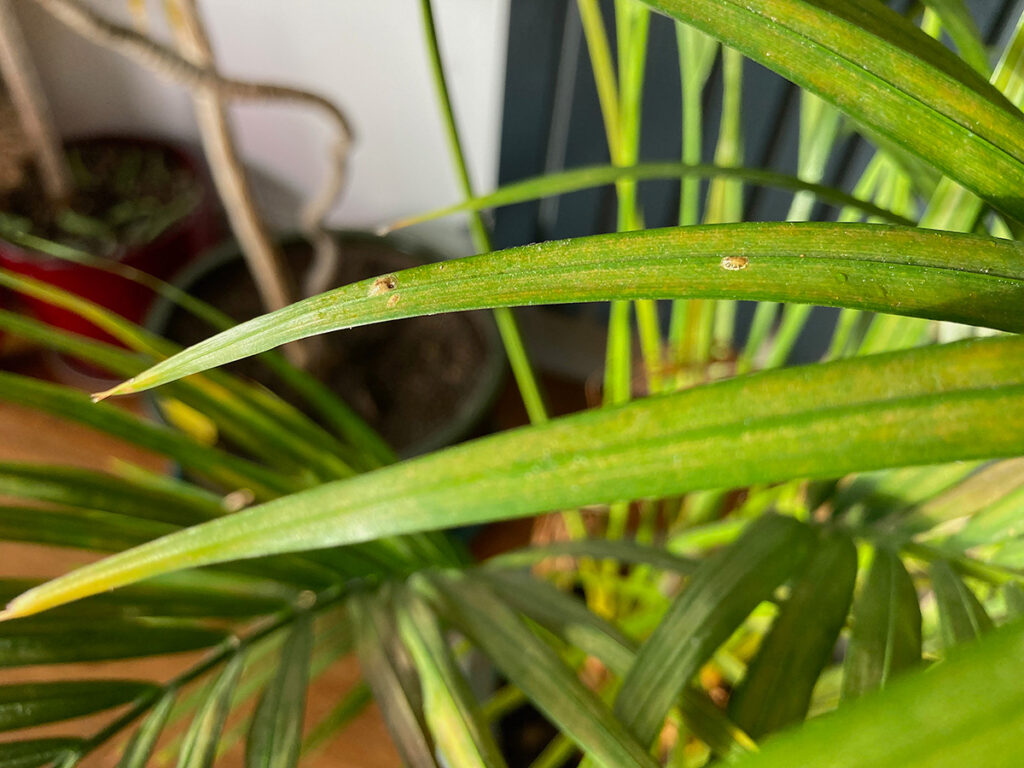
If fungus gnats are a problem, treat with a biological control. Water the soil with parasitic nematodes, Steinernema feltiae and also pop yellow fly traps in to the pots to attract the adult flies. This process will break the fungus gnats life cycle. You may need a do a few applications but keep perserving, your plants should end up fly-free.
Propagation
Palms are very easy to propagate by division. Simply take your plant out of its pot and tap away the soil to expose the root ball; this will reveal the individual stems. Gently tease apart the roots to separate the plants then pot on your new plants in fresh peat-free compost and perlite in a slightly larger pot than the root system.
Fun fact
Parlour palms are slow growing so little seedlings are handy for terrariums – until they out grow their space!
In Madagascar, the fibre from Areca palms are used to make fishing nets.
What do the latin names mean? Chamaedorea elegans translates as low growing, elegant and Dypsis lutescens translates as becoming yellow and living in the marshes.




